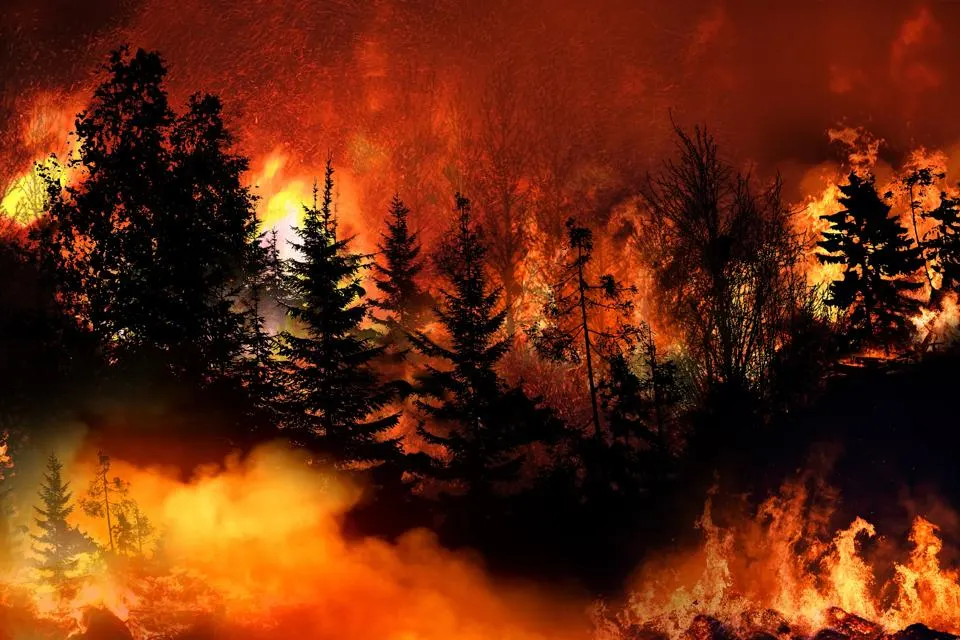
When I lived in San Francisco, California, I became accustomed to having a wildfire season. During that time, I knew that the air quality would be poor, air purifiers would sell out everywhere, and the sky may turn orange for days on end, with one terrible fire often happening around late October or early November.
Friends and their families had houses burn to the ground regularly and many people who lived in the hills lost homeowner’s insurance coverage for fire damage because the financial risk was too great for the insurance companies to bear.
The United States Geological Survey warns that as global warming progresses, natural disasters will increase in frequency and severity. This is how these natural disasters across the United States affect your wallet and some ways to lessen the burden.
Direct Financial Costs
It’s no secret that the economic impact of natural disasters is immense. The National Oceanic and Atmospheric Administration estimated the financial cost of the 28 natural disasters that occurred in 2023 to total $92.9 billion.
Even with insurance coverage, natural disasters like earthquakes, hurricanes, fires, and tornados can result in significant cost to the individuals and businesses affected by them. Many insurance policies also specifically exclude things like earth movement and flooding from policy coverage, forcing individuals to cover damages out of pocket.
Real Estate Impact
For some people, their homes are their main asset. According to Pew Research, a home is typically the highest value asset the homeowner has. It may be their shelter, emergency reserve, and retirement plan all wrapped into one location. But what happens to the value when your home shows itself to be susceptible to natural disasters, and therefore both a financial and safety risk? The property value goes down. For the people who do have their home as their main asset, this can be a devastating blow.
Securing a mortgage or home equity line also becomes increasingly difficult because lenders do not want to take on the financial risk either. Investors needing loans in these areas may find themselves paying an interest rate higher than the market rate or they may not even be able to qualify for a mortgage. Additionally, for some lenders, if you don’t have sufficient homeowner’s insurance, they reserve the right to repossess your home.
Strategies To Protect Yourself
Emergency Reserves
First and foremost, every investor should have emergency reserves regardless of whether they own a home. The appropriate dollar amount of reserves should usually be calculated based off monthly expenses. For most, three to six months of fixed expenses should be sufficient.
However, if you are having difficulty acquiring sufficient insurance coverage for the types of disasters that could affect your home, you may want to consider increasing the amount of money you hold in reserve. It may be appropriate to keep more than six months of expenses in reserve to self-insure some of the added risk.
Let’s say your home is susceptible to wildfires and your insurance company opts not to offer you fire coverage in the future. If your regular expenses are only $2,000 per month, most guidance would suggest you need a maximum of $12,000 in reserve. However, if your house burned down, $12,000 may not go very far toward home repairs.
Diversify
Your home should not be your entire investment strategy. You should have other investments to fall back on beyond those emergency reserves. Even saving a small amount per month can make a big difference in the long run.
You should also ensure that your investment portfolios are sufficiently diversified because natural disasters can affect financial markets. For example, let’s say you hold a disproportionate amount of stock in one oil company and that company has a costly oil spill as the result of a tsunami, your portfolio value could reduce significantly or even go to $0.
The reach of natural disasters could span across multiple industries and create financial stress on many companies, but there will always be some industries left unaffected. Having a broadly diversified portfolio can take a lot of this financial risk off the table.
Programs That Can Support You
Federal and state governments usually understand that people need significant financial support after a disaster strikes. Programs through organizations like the Federal Emergency Management Agency were created to provide some relief.
There can also be local community-led initiatives to support those affected by natural disasters.
Conclusion
Natural disasters can pose a significant financial threat to individual investors, affecting property values, insurance costs, and personal finances. Proactive financial planning, including investment diversification and maintaining emergency funds, is essential to mitigate these risks. Additionally, leveraging government and community support can provide crucial assistance in times of need. As the frequency and severity of natural disasters increase due to global warming, staying informed and prepared is more important than ever.
Content retrieved from: https://www.forbes.com/sites/cicelyjones/2024/10/29/how-to-protect-yourself-from-the-financial-impact-of-natural-disasters/.





